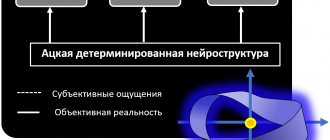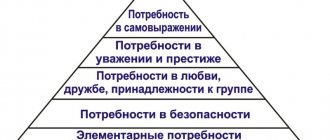Almost all of us have been overcome by philosophical questions - “why do I live this way?” or “Why do I have what I have?” We often have thoughts that can put us in a difficult or hopeless situation. One way or another, we begin to think about life when the opportunity presents itself.
Every person, without exception, has faced various difficulties throughout his life. And not everyone can solve them competently, and therefore in some cases there is nothing left to do but enlist the support of a specialist in the field of psychology.
And when problems take over, special classes, which include coaching, help to cope with them. In English, the term coaching refers to methods that combine consulting and training.
Their goal is to help a person achieve certain goals - improve their quality of life or find their dream career. A bit reminiscent of mentoring, but coaching does not imply general personal development, but the achievement of set goals.
One of the tools used in practice in such classes is the Dilts pyramid, which allows you to solve many life dilemmas, as well as find answers to long-standing questions. This is a good chance to understand your true purpose. But before moving on to getting acquainted with this “structure”, it is worth briefly getting acquainted with the biography of the creator.
Curriculum Vitae
The name of Robert Dilts is not familiar to everyone, but he is the leader of the modern movement of NLP (neurolinguistic programming). His teachers were two recognized masters of psychology, John Grinder and Richard Bandler.
Robert Dilts' inexhaustible talents have virtually no boundaries and are relevant in many areas of human activity. This is not only modeling a person as an individual, but also consulting business partners.
Robert is also busy creating programs that relate to human-computer interaction. Other achievements of Robert Dilts include collaboration with many well-known companies:
- Air!
- Computer!
- Known to most film fans!
- Popular!
- Xerox Corporation!
- Italian!
The pyramid of Robert Dilts is not the only creation of the author; he recently completed the creation of a development project.
In addition, Dilts dealt with other global giants in various industries. More than 40 books on the general topic of NLP have been published from his pen. In short, the man has achieved many successes in his life and helped a large number of people solve their problems.
Definition of a pyramid
To understand the features of this mental construct, it is worth turning to its form. Any of us has seen real Egyptian structures of antiquity thanks to the Discovery TV channel, where documentaries dedicated to the secrets of the tombs of the pharaohs who lived many millennia ago were broadcast more than once.
There are several levels inside the real pyramids, and the top one is specially reserved for the tomb. Robert Dilts developed a form that also has “floors” - there are 6 of them. In fact, this is what Dilts’ pyramid in communication , relationships, and other aspects.
The creation of the author of books on NLP should be classified as a “construction” of a mental nature, since there is no full-fledged physical embodiment like the Egyptian tombs, but it is directly related to the mind.
Each such step symbolizes a shelf, or rather even a whole floor, where the internal components of a human individual or some kind of “collective mind” are located. There are already slight similarities with real-life Egyptian tombs.
Having a clear idea of what exactly these levels characterize, as well as a thorough study of the problem, will allow you to consider in detail your own attitude to the problem and find the reasons why it seems unsolvable.
Examples of beliefs at the levels of the Dilts pyramid
| Level | Causes | Meaning | Limitation |
| Environment | I didn't go to university. | I have no specialty - poor initial prospects. | Nothing bright shines in my life. |
| Behavior | I can’t find a job or start my own business after failure. | I look gloomy, and they don’t want to take me into the team. | You can't take risks, you have to stick to the old. |
| Capabilities | I can't write because I always had twins at school. | If one person can do something, others can learn it too. | You can't learn anything without practice. |
| Beliefs and values | Honesty is sacred to me because I myself was constantly lied to by my parents. | Equality in relationships means true partnership. | Trust is impossible without openness. |
| Identity | I'm a failure because no one ever supported me. | Unemployed people are a burden on society. | As a recipient of benefits, I am at the bottom of society. |
| Affiliation | She believes in God because that is what she has learned. | To believe means to be in harmony with yourself and the world. | Without faith, you might as well kill yourself. |
What is the need?
This mental “structure” has significant significance in such a field of human activity as psychology. There are situations when you are not happy with something - quality of life, work, environment, etc. A lot of people have encountered this, otherwise psychology itself (including specialists) would not exist at all.
So, the pyramid in question can be of significant benefit:
- Allows you to understand the situation that has developed not in the best way. When performing a rapid analysis, areas that require adjustment are discovered.
- It is possible to arrange existing problems in stages, and then begin to solve those located at the lowest tier. Thus, a person adheres to the desired direction, which is a bit like climbing the career ladder. That is, moving up allows you to take your life to a new level
Dilts's pyramid of logical levels is relevant for solving many issues - this is not only self-realization in life, including building a career and money matters.
It promotes detailed development of personal qualities. And they are very valuable for building harmonious relationships with partners (colleagues) at work, friends (household or at the place of study), relatives, and new surroundings.
Level #3 – How do I choose?
Level three, which confronts us with the question of choice. How do I choose? Here we are talking about your capabilities, the internal mechanisms of making a choice and its reasons. If level 2 told us about external behavior, then level 3 is about internal motivation.
This level invites you to look at and evaluate how you make choices. How easy or difficult is a decision for you, how do you make it (on your own or with someone’s help), do you accept or not accept its consequences, do you bear full responsibility for it.
Its essence is also to look at your life strategy, at your plans and goals, vision, movement in life.
For example, how do you start your day before work?
Do you stretch out the time you wake up and jump up at the mere thought that you are already very late, and still have absolutely nothing ready to go to work? And with a wave of your hand, you throw away the unmade bed, half-drunk coffee and lunch unpacked for the children for school, take off, catching up with the departing tram?
Or do you wake up a few hours before work to get ready for the new day and ease into it? Are you thinking over plans, preparing to meet him with joy, openness and determination to take a lot from him?
Do you notice a difference in life strategies, one of which is haste and going with the flow, and the second is leisurely and deliberate, which is the key to a good day and your whole life?
But elections and life strategies also arise for a reason.
Levels of the Egyptian analogue
The search for answers to vital questions is reminiscent of wandering through a labyrinth with its endless confusing corridors and dead ends. Without any map or clue, finding the exit is very difficult, if possible at all. But as soon as you rise to a higher level, above the labyrinth, all the paths will be visible - entrances, exits.
Our life is like wandering through such a labyrinth - any problem cannot be solved qualitatively at the level of its creation. In other words, to solve the current problem, you should go up a floor or two. Only in this way can the best scenario for further developments be determined.
To this end, it is necessary to ask the right questions, which will push you to find the right answers. Many of us are simply unable to ask ourselves questions and get answers. For this purpose, it is best to use the creation of Robert Dilts.
All levels of the Dilts pyramid include main and secondary questions that help you understand your own course of life situations.
Level one – environment (reaction)
The lowest first level is based on each person's actual environment. This includes all components of the internal and external environment. Mainly it is the person himself, his features, appearance (including clothes) and other individual traits.
This should also include all other people with whom you have to deal, material wealth, opportunities, family and other things. That is, the main question at this level is “what do I have at the moment?” However, to understand the whole essence of this question alone is not enough, you should ask a number of others:
- Am I comfortable?
- What's going on in the environment?
- Where am I or want to be?
- What place do I occupy in my environment, do I feel comfortable with this and does it correspond to what I want?
- Who is next to me, who would I like to see, and who is better to weed out from my environment?
- Are there people around me helping me achieve a certain goal?
In a word, it covers all aspects of life and everyday life, including material well-being and interpersonal relationships (including family, partnerships and others).
Level two – behavior (actions)
At this level, the fundamental question is: what am I doing? That is, it allows us to consider the behavior of each individual. Moreover, this applies not only to action or inaction, but also to the achievement of any results.
Here is an illustrative example of how the pyramid of neuro-logical levels can be considered in the case when a person begins to complain about a lack of finances. Here his main problem is himself, and he simply does not have the desire or strength to admit that he devotes little time to work.
In addition, when asked what he does all day, his working hours are shortened. Instead of the required 8 hours, as happens with many other successful people, a person spends no more than 4. This indicates a lack of activity on his part, which would be aimed at developing professional qualities.
We can draw a certain conclusion - often the problem is caused by elementary laziness. Many people around the world suffer from this deficiency! This is where the mental pyramid actually helps – income cannot increase due to laziness!
It is worth asking yourself a question regarding what I share and receive. The obvious answer is why we have what we have. And here it’s natural to ask another relevant and interesting question: is life just like that, or are we ourselves responsible for everything that happens to us?
Level three – abilities (direction)
Here Robert Dilts' pyramid of logical levels is based on strategy and his main question is - what is my choice? In the life of every individual, the choice made is far from the last place. Moreover, this is influenced by various factors:
- health;
- target;
- to what extent a person is passionate about something, and so on.
Being on the third floor of your pyramid, you have the opportunity to analyze your own attitudes in detail and understand the reasons for failures in life. Some people prefer exhausting work in order to save money to buy housing or undergo training in another country. Many girls dream of a successful marriage.
Still others generally rely on finding a good job or starting their own business. It is also possible to make a choice in favor of playing sports or learning foreign languages after a hard day. And it’s even easier to just drink beer while lying on the couch watching TV. At least that's what most people do.
The Dilts Pyramid can indeed provide a wide choice - the main thing is to understand what the soul strives for. This is the only way to achieve certain successes in analyzing your life position. A number of additional questions may also help:
- What strengths do I have and is it possible to rely on them to achieve the desired result?
- What skills and abilities can I acquire to achieve what I want?
- Can I benefit from the abilities and capabilities of others?
Each individual, first of all, needs to determine his abilities. Every person on earth can do this, both dramatically expanding them and seriously limiting them within reason. The main thing is to find the reason and incentive to action!
Level four – values (motivations)
This level deals with beliefs and values. And here each person has his own opinions and judgments on this matter. But a number of life positions or even beliefs only work to the detriment. For example, how can a person become an entrepreneur if he considers himself honest, but is sure that all other businessmen steal money for their own profit?!
Another example is when an applicant believes that a place in a prestigious university is obtained only through connections. Therefore, there is no point in even trying to pass the entrance exams.
In other words, the Dilts pyramid at this level helps to reveal patterns and stereotypes of perception of various life circumstances that serve as an obstacle to achieving the goal.
Perhaps this is a more important level, allowing you to determine your own perception. From the above examples, it is easy to conclude that each person determines his own values, but they may not coincide with the perceptions of other individuals, which, in general, is natural. That is, some things are given more importance, others less, or they are completely ignored.
This refers to the so-called personality basis, and it is not so easy for a person to abandon it even under strong external influence. And the reason is that beliefs should be attributed to the unconscious perception of human essence. It controls the behavior of the individual, determining his life path.
At this level it is easy to get answers to questions like these:
- How important is this goal to me?
- How valuable will the result be?
- Will achieving a goal strengthen my beliefs in life?
Here one question begs to be asked, which should be classified as rhetorical statements: why do we actually believe in everything that our faith adheres to?
Level five – identification (life role)
The importance of this level is even higher than the previous one, since it has a noticeable impact on the floors below. This is about self-awareness and self-understanding. Through these definitions, Dilts' pyramid helps define one's faith.
Some people are confident in their genius as an artist or designer. Therefore, he can successfully demonstrate himself at exhibitions, competitions, competitions and shows. Another will consider himself a failure or mediocrity.
In other words, the fifth level allows a person to realize his place and what role he plays in this. The main thing is to evaluate yourself realistically - that is, not to underestimate your strengths and at the same time take into account your shortcomings that require further development.
What is characteristic is that the answers here do not lie on the surface. The role and life position of each person does not depend on gender characteristics, marital status, social status, procession. This category is much broader!
The following questions will help you understand the essence or at least partially have an idea of what we are talking about:
- What is my attitude towards those individuals whose goals and beliefs coincide with mine?
- What is the value of my goals in relation to the people in my immediate circle?
Self-identification is a valuable quality for any of us! This factor is largely responsible for our many successes.
Level six – mission (spiritual attainment)
Here Dilts' logical pyramid is crowned with a level that facilitates the individual's awareness of his mission. A clear awareness of what he actually lives for is nothing more than a powerful tool that allows him to overcome various obstacles and difficulties that arise along the path of life.
At the same time, the mission must be expressed in simple and understandable terms. Complex, bombastic expressions do not work here because they do not carry any practical significance.
It is good to give one significant example here. The main principle of the successful activities of most companies located in the land of the rising sun is a clear understanding of values and mission, taking into account the relevance for 100-200 years in the future. Is the life of every person on earth created for the purpose of wasting it?!
Thus, if you correctly approach the analysis of your life position in this world, without hiding from yourself, answering all the questions posed, you can identify certain gaps.
Self-improvement is the path to achieving a goal, and therefore success. After all, each of us strives for this in our souls. At the same time, a clear awareness of your weaknesses greatly facilitates this process.
How to use the Dilts pyramid to set goals
Part I: Carrying the target state through neurological levels (NE)
- A short discussion is held to set goals that meet the criteria: positive, specific, environmentally friendly, resourced, meaningful.
- When performing the exercise, hold the “frame”: “Assume that you have already achieved your goal...” Go through all NEs with this “frame”.
You need to start from the bottom level - the environment (people, objects, space). Climb up step by step. Using a spatial anchor, and perhaps with symbols and terms, reinforce the vision of achieving the goal.
When a lack of resources is detected at one or two levels, move to a higher level. Look for missing resources on it or plan to move to a higher layer a little later.
Practical questions at different levels of the problem pyramid:
- Environment:
- Where and with whom are you?
- What do you see and hear?
- What smells do you smell?
- What flavors do you smell?
- Behavior:
- What are you doing in this place?
- What are others doing?
- Abilities (skills):
- How do you do what you do?
- How do you feel about the people here?
- What special skills do you have?
- Beliefs and values:
- What are some of the important things you believe in?
- Why do you do what you do?
- What are your thoughts about yourself, the people around you, your work?
- Individuality (identity):
- Your understanding of yourself, your image?
- Who do you consider yourself to be, what is your essence and role?
- Affiliation:
- Are there people or groups here that you belong to?
- What is your mission in all of this?
- Can you express in words the meaning of your actions?
Move on to the next stage.
Your subconscious mind will reveal important information in the form of an idea, symbol, feeling or picture. It is your subconscious that has worked for you and for your goal. Take it all in and take a short break.
Part II: Gathering Resources
- Go back and remember all the ideas and resources you found along the way. Feel what each layer is rich in, what knowledge and experience it is strengthened with.
- When something is not enough at a level, go to a higher stage and take resources from there . Go back and evaluate the changes that have occurred with the resources you have taken.
- Go to the “environment” level and remember your goal. Feel whether your goal has become richer compared to the initial one.
Part III: Completion
- Go through all the stages again at your own pace. Take at least a little time for this step.
- Go through all the levels in reverse order from top to bottom - quickly, without thinking. Walk through, return to the starting position and see how much richer the target has become.
- Indicate when the first step towards the goal will be taken?
A number of additional questions
Giving answers to the key questions of each level, the Dilts pyramid allows you to objectively assess the picture of everything that is happening. However, everything is seen only in a general light; in order to clearly see the essence of what is happening and find the right solution to the existing problems, you should use the help of a number of additional questions:
- After I achieve my goal, what will others do? Will it please them or will it?
- In what direction should the personal perception of others change after achieving the goals?
- Will the result be fruitful for my colleagues and loved ones?
- If I achieve my goal, will my mission change?
- Can I do some simple things towards my goal within 48 hours?
- How will my loved ones react to my intentions? Will they be able to make appropriate adjustments if necessary?
Something similar is covered in many additional coaching classes.
Principle of operation
The overall picture is now becoming clearer, but how to work with the Dilts pyramid ? Theory is one thing, but practice is something else.
This is what we will discuss further. Questions at each level make it possible to understand where and when a change in values and deviation from a given course occurred. These are a kind of signal beacons indicating at what level a person is stuck.
The basis of any coaching technique is deep introspection - solutions to problems do not lie on the surface, so you need to dig deep into yourself.
The algorithm for applying Robert Dilts’ creation in practice is as follows:
- Formulate the task clearly and clearly, but this must be done in writing. Our thoughts, of course, are material, but also fleeting, and therefore cannot always be taken seriously. But what is written by hand on paper will acquire tonality and serve as an impetus for action. Another option is to use a voice recorder.
- Determine on which “floor” the real problem is located.
- Now we should analyze the situation in relation to each of the levels. Having gradually reached the very top, it is worth imagining that the goal has already been achieved. You should enjoy this victory for at least a few minutes. But now to the point - at this moment you need to realize your feelings and determine whether a feeling of satisfaction has appeared.
- Now work with the Dilts pyramid should be carried out in the opposite direction - to the bottom of the “Egyptian structure”. This will allow you to make appropriate adjustments for each level. The result is that the plan will become more detailed, which makes it easy to identify a number of new useful values.
The value of Dilts' mental model lies in the fact that each level leads to the discovery of a cause-and-effect pattern. If you take asking questions seriously and getting answers to them, then a person will be able to fairly quickly review his own living conditions and circumstances.
In this case, you can do without outside help, although outside help will not hurt. Only for this you need to find a person in whom you have complete trust. His role will be limited to asking leading questions and recording answers.
Theory of origin and brief description of the pyramid
Robert Dilts is one of the psychologists who actively developed neurolinguistic programming (NLP). He created his idea of logical levels under inspiration from the work of Gregory Bateson. After analyzing them, he determined that people perceive information and analyze it differently. This is what causes their failures or successes.
Having determined this, Dilts identified several logical levels, by understanding which a person can change his life for the better.
Understanding the neurological levels of Dilts is a powerful tool in self-coaching. It gives a person a unique opportunity to independently identify their mistakes and take the path of self-development:
- you will be able to ask yourself special questions, identifying situations that have an impact on your life;
- Once you deal with your problems, you will see where to go next to be satisfied with your life.
So what is this pyramid? Let us briefly describe this model in simple words – from lowest to highest.
- Environment – level of reaction.
- Behavior is the level of action.
- Abilities are the sources and direction of a person.
- Values, beliefs - what a person allows himself, motivation.
- Identity - who I am in this world, what role I occupy in society.
- Mission is a person’s spiritual level, the meaning of life, vision.
At each level, a person stores his own information, experience and knowledge.
The importance of physically recording tasks
In many coaching sessions, the Dilts Pyramid is the most important because it is used more frequently. What is typical is that one important and mandatory condition must be observed - all goals, including processing of results for each specific level, are recorded in writing. There is a completely natural and logical explanation for this:
- When writing a text, many essential points are learned more easily. As a result, it is easier to find a solution to a problem or a way out of the current situation. Perhaps this is why all students write notes during lessons - for better assimilation of incoming information.
- Writing text leads to the emergence of new nerve impulses that enter the brain. This contributes to a more precise formulation of the problem, which allows you to quickly find the right solution.
- In the process of writing a goal, it acquires visual outlines, which happens involuntarily. If an individual imagines himself in the place of a person with an already solved problem, then he acquires a significant incentive to action.
- As the task is recorded on paper, the vision of the situation sometimes changes. But if you have a factual description of the problem before your eyes, then it is possible to easily make the appropriate adjustments.
To understand all the features, you should immediately move from theory to practice, that is, devote time to answering the questions asked. Based on the degree of responsibility for such work and honesty with oneself, everything will begin to become clearer on its own. To do this, keep a piece of paper with a pen (pencil) or a voice recorder nearby.
Why tasks need to be written down
When solving problems using the Dilts pyramid, you need to comply with one condition: record your goals, reasoning and results on paper. For what? There are 4 reasons:
- The brain perceives information better. Remember how you wrote notes at school.
- When writing, the brain begins to work more actively. Thanks to this, it is possible to more accurately define the problem and quickly find a way to solve it.
- The problem from mental becomes tangible, physical. At the same time, a person can even imagine that he has already solved it. This will become motivation for further action.
- By writing down your thoughts, you see the situation from the outside. This allows you to quickly analyze and solve it.
After you take notes, answer the questions at each level. Write down your answers too. You will see that the problem is eliminated as if by itself.










